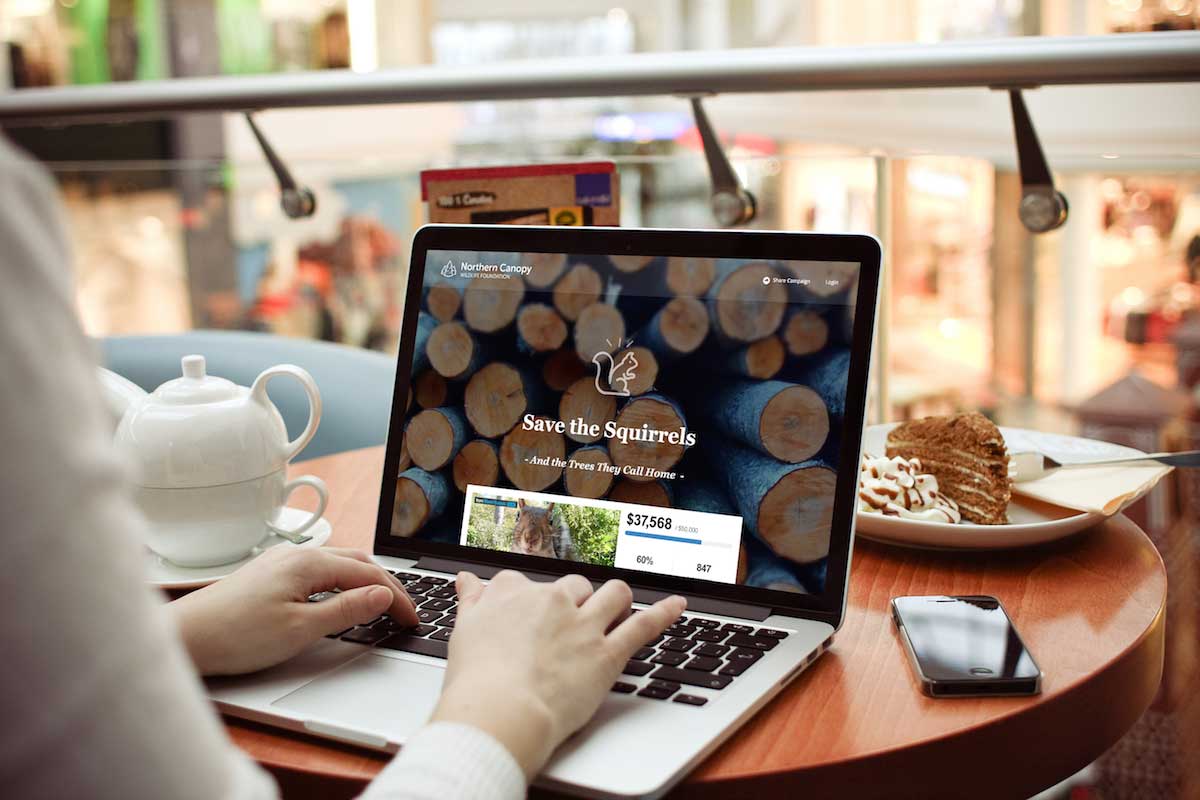3 Ways to Promote Equity Through Community Design

Kayla McClanahan is a guest contributor to the Classy Blog.
Nonprofits exist to do good in the world. However, sometimes when a program is created, it might not properly take into account the needs of the community being served.
This can lead to unintended consequences like further inequality, misplaced power dynamics, or simply an inability to fulfill the nonprofit’s mission. To prevent this from happening, you can use principles of equity-centered community design to ensure your impact is as strong as possible, and truly help the people in your community.
One approach used across many industries to find solutions to complex problems is the concept of technical design thinking. The broad, four-phase process leverages creative problem-solving techniques, empathy, and community feedback to:
- Gather inspiration
- Generate ideas
- Make ideas tangible
- Share your story
However, activists and designers are calling out shortcomings of the technical design thinking process and leveraging it to create new approaches for improved community design. For example, Creative Reaction Lab (CRXLAB) and its founder, Antionette Carroll, crafted an alternative approach called equity-centered community design in the wake of the deadly police shooting of Michael Brown in Ferguson, MO.
CRXLAB uses a process that incorporates similar steps to technical design thinking, but they also prioritize humility, inclusion, and addressing power dynamics to organize and make change on an issue.
These additional mindsets are critical for nonprofits to embrace in order to create meaningful and equitable impact. This post examines the intersection of design thinking and equity-centered community design and considers ways you can use these approaches to promote equity within your nonprofit.
Build Humility
Understanding the experiences and opinions of your program participants is critical to create meaningful programs. Humility, or the process of constantly checking your own position, perspective, and biases in the work you engage with, is at the core of design for equity.
Humility requires moving past the notion of always being “the expert.” When you present yourself as the sole expert on a specific issue in a marginalized community, and the community merely as a recipient of your services, you begin a cycle of othering.
This can separate your important work from the community in an “us versus them” dynamic and create barriers for authentic engagement. The true experts are the people you serve.
CRXLAB refers to beneficiaries as “the living experts.” The most effective partnerships position nonprofit workers and “living experts” side by side to share knowledge and design together.
Your nonprofit can actively practice humility-building at work by admitting that you might not know all of the answers. Be comfortable in the fact that you’re not the only expert on a topic, and seek to gain as much insight and understanding as possible.
Co-Create With the Community
Another mindset CRXLAB points out as being critical to equity-centered design is co-creation. One of the major critiques of design thinking is that it relies on collecting feedback from a community, rather than directly involving them in the process of creating.
The community being designed for would, in that case, be left out or excluded from where actual power lies—the design process. According to Antoinette Carol:
You cannot say that you are effectively addressing these issues [such as education, employment, and gun and domestic violence] if you are not including the people affected by them into your efforts, and giving them access to power.
One way to accomplish this is to employ people directly from the community your organization serves. By provided access to leadership opportunities within your organization, you ensure accurate representation and a deeper connection to the cause.
Your organization could also invite community members to be apart of the board of directors. After all, they are living experts on the issues your organization works in and should be at the core of driving new programs.
Co-creation happens best during the second and third phase of design thinking–generating ideas and making those ideas tangible.Come up with your own ways to co-create by using asset-mapping techniques that identify specific strengths, skills, and abilities within the community you serve.
For example, when you’re writing program curriculum or planning your organization’s next event, invite your beneficiaries into the planning process. Designing a program or event together, or co-creating in this way, can increase participant buy-in and create a stronger impact.
Address Power Dynamics
Who leads your organization? How are resources distributed? Who gets funding for projects and who doesn’t? In order to promote equity at your nonprofit, it’s necessary to understand where the power lies.
To do so, explore power-mapping techniques and identify how decisions are typically made at your organization. If your nonprofit operates like many institutions in the United States, it may practice a top-down approach where lower-level staff or program participants have little decision-making power.
If this is the case and you are a lower-level staff with limited power, identify the power you do hold and challenge yourself to share that power through co-creation. Write programs, be transparent, and advocate for change with your living experts to ensure their voices are heard–not just by you, but by everyone that needs to hear them.
Practicing this can put your nonprofit on a path towards dignity, empowerment, and mission-fulfillment. And as you move forward, remember this snippet from the CRXLAB Equity-Centered Community Design Field Guide:
“Design is the intention (and unintentional impact) behind an outcome.”
These three approaches are fluid, and without an end-date. They require constant learning, attention, and work. But commitment to equity-centered community design is the key to co-creating systemic change and scalable impact. When in doubt, map it out.

How to Design a Stunning Campaign Page on Classy
Subscribe to the Classy Blog
Get the latest fundraising tips, trends, and ideas in your inbox.
Thank you for subscribing
You signed up for emails from Classy
Request a demo
Learn how top nonprofits use Classy to power their fundraising.



